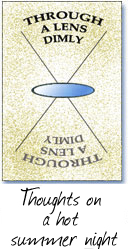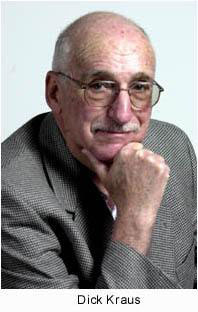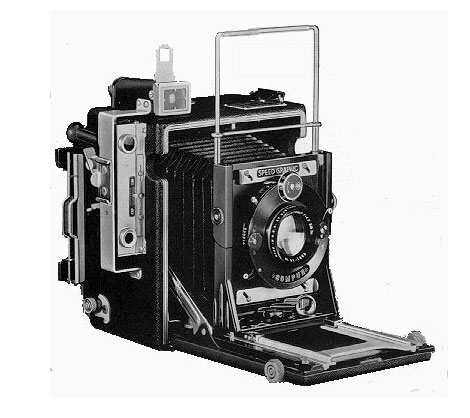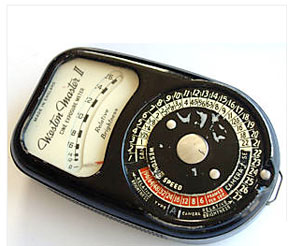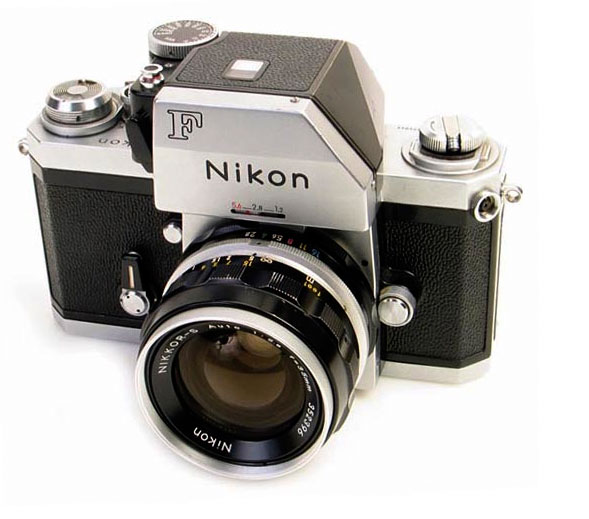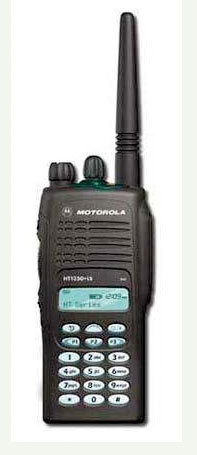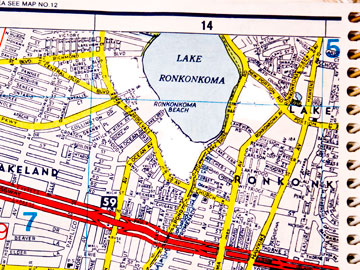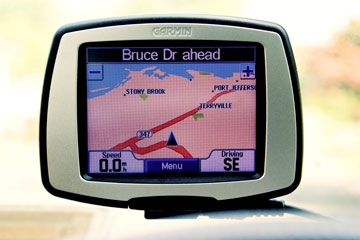|
|
|
|
|
|
THROUGH A LENS DIMLY THOUGHTS
ON A HOT SUMMER NIGHT Dick Kraus There was no Spring this year in the Northeast. April, May and June were cold, rainy and miserable. Normalcy finally descended upon Long Island and the rest of the East Coast with a vengence. August began with the heat and humidity that is more appropriate for this time of year. Of course, now we are all complaining about how oppressive it is. Which brings up the maxim, "Be careful what you pray for. You just might get it." Barbara and I had been griping about having been rained out of so many outdoor concerts which we so dearly love in the summer. So, a few weeks ago we decided to brave the heat and the sweat and we packed a couple of heroes and some iced tea and headed to Heckscher Park in Huntington. We got there about two hours before the start of the concert because we knew that the Long Island Philharmonic is popular and draws huge crowds. We were able to find a nearby parking spot on the street and we set up our canvas chairs in a good spot and then took a leisurely stroll around the lovely pond as magic light descended upon the scene. It was a delightful evening and a light breeze masked the humidity and it became very comfortable as the sun sank behind the tall trees that overspread the concert area. OK. OK. What does all of this have to do with photojournalism? Don't click off just yet. Have patience with a senior citizen. If you have followed my blatherings in the past, you know that it takes awhile for me to make my point. Where was I? Oh, yeah. We got back to our chairs and had our picnic dinner. There was still an hour to wait, so I settled down in my chair and enjoyed the darkening scene as the cicadas in the trees chirped their love songs and warned of another hot day tomorrow. I noticed a young man, maybe in his early 20's, setting up his chair next to mine. We nodded a silent greeting and I watched him unpack a Nikon D40. He fastened it onto a nice looking Manfrotto tripod and snapped on a longish looking lens. "What lens is that? An 80-200?" I asked. That was the lens I favored when we started using the Nikon D-1 as my newspaper career came to a close. "No, it's a 300mm prime lens," he answered. He told me that he was an amateur and had rented this lens to supplement his own wide angle zoom. As the night wore on I watched him as he shot the concert. At intermission, he chimped his shots and let me see them on his rear screen. He had some nice close-ups of the conductor and some of the orchestra members in action. I asked him if he ever considered using a slower shutter speed to introduce some creative blur to the images of the conductor's wildly moving arms and hands. We talked a little about how digital photography had killed any vestige of discipline in today's photographers. It's just too easy to shoot and shoot and shoot, and then hit delete, delete, delete. I told him about the neolithic era of photography when you shot film and had to change rolls every 36 exposures. "Film?" he said. "I really want to try that, some day." "OH, MY GOD!!! The realization that there were photographers who had begun shooting in the digital age and had never shot a roll of film hit my aging brain like an avalanch. Why did this epiphany just come to me? Have I been living on another planet all of these years. Jeez!
In rapid succession came autofocus, rapid wind motordrives and then along came digital cameras which give you such exquisite control over the rendering of your image and they keep improving every time you turn around. It is so easy to get a good photograph under conditions that were thought impossible back in the day. As a newspaper photographer, back then, I would worry that my focus on a moving subject might be a little off and maybe the light had changed between the time I took the light meter out of my camera bag and the time I pushed the shutter button. Maybe my flash fill was too harsh. A thousand "what if's" plagued me until I got back to the office and souped my film. There was no such thing as "chimping" your film to make a quick check so you could correct whatever problems you might have on the next frame. My God! As I write this, I can see myself wearing bearskins and chipping my images onto the stone walls of my cave. So many advances in technology in my lifetime. It boggles my mind. And, not just in photography.
Dick Kraus
http://www.newsday.com |
|||||||||||||||
